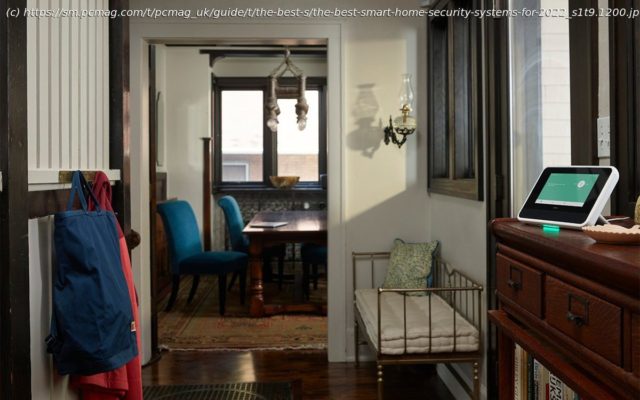Looking for an alarm system to make you feel more secure? We’ve tested all the top professional-install and DIY home security packages to help you decide which one is right to protect your family and your property.
It’s easier than ever to set up a smart home in which you can remotely control your lights, lawn mowers, thermostats, vacuums, and just about everything else from a smartphone app. It has also made it simple (and relatively affordable) to monitor your home from pretty much anywhere. Smart security systems are highly customizable and available as do-it-yourself kits or as full-blown setups that include professional installation and monitoring.
Depending on your needs, you can go with a system that you monitor yourself, or pay a subscription fee to have professionals surveil your home 24/7 and contact your local fire or police departments when alarms trigger. You can even take advantage of on-demand monitoring services when you’re away on vacation. Of course, the more coverage you have, the more you should expect to pay.
If you’re not ready for a dedicated security system, plenty of standalone devices are available that let you monitor your home from anywhere via your phone or tablet, including indoor and outdoor security cameras, video doorbells, motion sensors, and smart locks.
Here are our top picks, as well as what you need to know before deciding how to secure and monitor your home. We also have a beginner’s guide to setting up a smart home if you want to do more than just secure your property.
What Are Home Security Systems And How Do They Work?
A smart home security system connects to your Wi-Fi network so you can monitor and control your security devices via an app. There are many different systems out there, covering a wide range of prices.
Entry-level systems cost less, and usually include some door and window sensors, a motion detector, and a hub that communicates with these devices via one or more wireless protocols such as Wi-Fi, Z-Wave, Zigbee, or a proprietary mesh network. (Matter is another standard to keep an eye on as it emerges.) You can add extra door, motion, and window sensors to provide coverage for your entire house and build a comprehensive system that includes door locks; garage door openers; indoor and outdoor surveillance cameras; lights; sirens; smoke and CO detectors; water sensors; and more.
A word about wireless protocols before we go further: In a perfect world, all home security components would use the same wireless standard to communicate with the main hub, but factors such as power requirements, signal range, price, and size make it virtually impossible to settle on just one. For example, smaller components such as door and window sensors typically use Z-Wave or Zigbee technology because they don’t require a lot of power and can run on smaller batteries. They also operate in a mesh topology and can help extend the range of networked devices. However, neither protocol provides the bandwidth that you get with Wi-Fi, which security cameras rely on to provide smooth video streaming, for instance. Moreover, a hub connects and controls Z-Wave and Zigbee devices, whereas you can control Wi-Fi devices on your home network from an app. Finally, Z-Wave and Zigbee devices use AES 128 encryption and, because they operate in a closed system with a dedicated hub, they are more secure than Wi-Fi devices.
Any smart security system worth its salt offers components that work together in a seamless environment and can be manipulated using customized rules. For example, you can create rules to have the lights turn on when a sensor detects motion, have your doors unlock when a smoke alarm goes off, and set a camera to begin recording when a sensor triggers. Some systems store recorded video locally on an SD card or a solid-state drive, whereas others offer cloud storage. Locally stored video is a good choice for do-it-yourselfers on a budget, but you have to be careful not to overwrite video you may need later. Cloud storage makes it easy to store and access recorded video, but it can cost hundreds of dollars per year depending on your subscription. Some systems offer both cloud storage and local storage, and some provide a dedicated storage drive that gives you DVR capabilities with time-lapse recording, thus making it easy to find a video event that took place at a specific point in time.
All of the systems we’ve tested feature an app that lets you use your smartphone as your command center to arm and disarm the system; create rules; add and delete components; and receive push notifications when alarms trigger. Most apps also allow you to view live and recorded video; lock and unlock doors; change thermostat settings; and silence alarms. Some apps even use your phone’s location services to automatically arm and disarm the system based on your physical location. The more expensive systems usually come with a wall-mounted panel that acts as a communications hub, with a touch-screen display that allows you to do everything the app does. The display lets you communicate with a professional monitoring service when an alarm goes off and view video from any of the installed security cameras.What Is the Best Self-Installed Home Security System?
Do-it-yourself security setups are ideal for budget shoppers because they can save you a bundle on installation charges and subscription fees.






